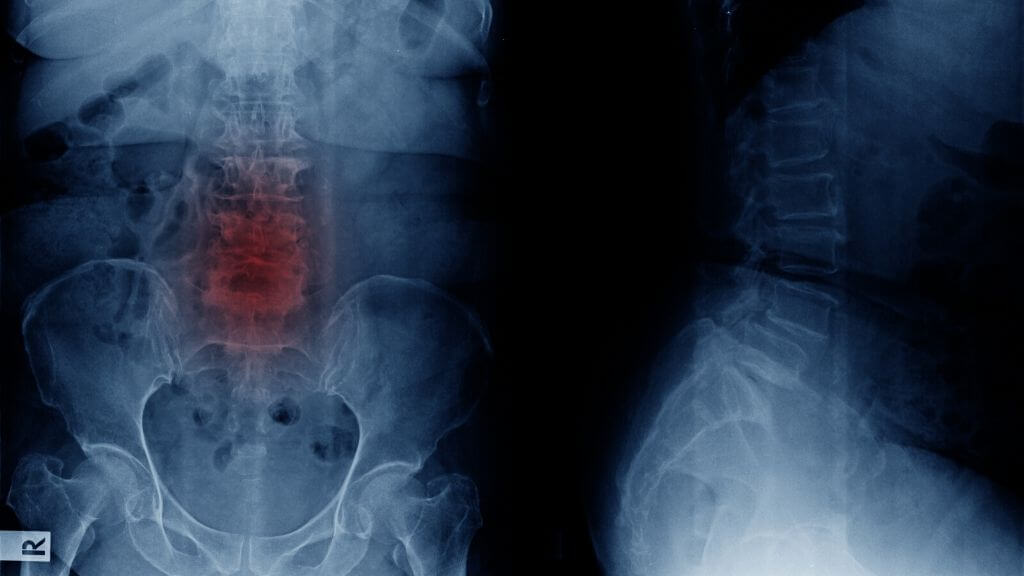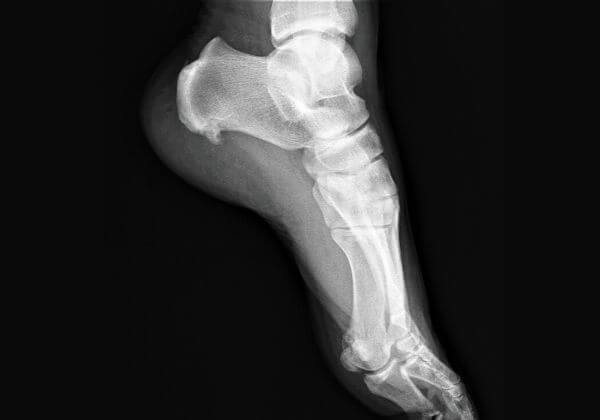Bone spurs are formed by a process called osteophytosis and are smooth projections that extend from the bone in places where bones meet. The name may sound painful, but in most cases, bone spurs (osteophytes) do not have symptoms, and you may not even know they are there.
Younger adults can develop bone spurs, but they more commonly appear with age, specifically after the age of 60. Having osteoarthritis increases the risk of developing bone spurs.
What Causes Bone Spurs
Osteoarthritis is the long-term wear on your bones and joints and is the most common cause of bone spurs. It is more common with age but can occur in younger adults who have experienced an injury or trauma.
The cartilage in arthritic joints is worn down and no longer provides a cushion for bones. As a result, the bones rub together, causing pain, and as the body attempts to repair the cartilage, new bone emerges, forming a bone spur.
The same development occurs along the spine when the discs between each vertebra become worn. Vertebral degeneration is another common cause of bone spur formation. Diffuse idiopathic skeletal hyperostosis (DISH) and ankylosing spondylitis are the two most common inflammatory disorders that affect your ligaments in the spine, causing bone spurs.
Bone spurs can also develop in your feet. Inflammation of the Achilles tendon and inflammation of the tissue at the bottom of your feet (plantar fasciitis) can also cause bone spur development. These bone spurs typically develop at the underside of the heel bone, and they are often called heel spurs.
Risk Factors for Bone Spurs
An injury or trauma to a joint will increase your risk for a bone spur. Injuries increase the likelihood of inflammation and tissue damage, which triggers bone spur development.

Overuse of a ligament or tension can also increase your risk. In addition, the following risk factors for bone spurs are:
♦ Genetics: Your risk for bone spurs is more likely when you have a family member that has also had bone spurs.
♦ Diabetes: Diabetes increases your risk for osteoarthritis and bone spur development. The exact connection is not known, but chronic inflammation is thought to be the linking factor.
Symptoms of Bone Spurs
In most cases, bone spurs do not cause painful symptoms. If they do become painful, you may need medical attention.
You may experience difficulty and pain when straightening your limb if spurs develop in your knee or shoulder. The spine is the most common area for bone spurs to develop, and if inside the vertebra, they can press against your nerves, causing pain and numbness in your back and extremities.
Bone spurs in your hip can cause painful movements from your hip to your knee and a reduced range of motion.
Diagnosis of a Bone Spurs
In some cases, the bone spur is visible as a bump under the skin, but in the majority of cases, you will not be able to identify that you have a bone spur.
Your doctor will conduct a physical examination and review your medical history first. They will perform x-rays and other imaging tests to locate bone spurs. MRI scans can provide images of your soft tissues and cartilage, and CT scans provide additional details of bone and the surrounding tissues.

Treatment for a Bone Spurs
For bone spurs that are not causing much pain or interfering with movement, you can take over-the-counter pain medications. Your doctor may even provide steroid injections to reduce swelling and inflammation in the affected joint.
Physical therapy also helps by strengthening the muscles around the joint to promote better movement and help release the pressure that may be placed on nerves.
In cases where bone spurs are pressing against nerves or significantly preventing movement, you may need surgery.
For bone spurs located in your spine, spacers are placed in the affected vertebra to prevent them from pressing against the nerve. Bone spurs in the shoulder or knee can be removed with arthroscopic surgery, which uses small tools and incisions to reach the affected joint.
To help minimize and control pain caused by a bone spur, you can:
♦ Wear shoes that provide good support and cushion.
♦ Maintain a proper posture when sitting and standing to keep your spine aligned.
♦ If you are overweight, lose weight to reduce pressure placed on your joints.
♦ Start physical therapy.
Natural Treatment for Bone Spurs
Since osteoarthritis is the most common cause of bone spurs, there are natural treatment options available. There is no cure for osteoarthritis, but you can prevent bone loss and strengthen the bones to reduce the risk of bone spurs.
♦ CalZbone contains several compounds that are essential for bone health. The calcium and vitamin D work together to enhance bone density, and both are important in the formation of new bones. A deficiency in either of these contributes to osteoarthritis and osteoporosis. CalZbone ensures that new bone is produced at the same rate as old bones are broken down. This prevents the growth of bone spurs.
♦ MenaQ7 is a patented formula made from the most optimal version of vitamin K2. This vitamin is responsible for transporting calcium where it is needed. Too much calcium in the wrong areas can lead to calcification of blood vessels and bone spur growth. Vitamin K2 deficiency is rare, but as bone gets more brittle with age, this supplement makes sure they stay strong.
♦ Vitamin D3 ensures that calcium from the diet is absorbed properly. Calcium deficiency is associated with an increased risk of bone diseases, including osteoarthritis. Vitamin D3 also enhances the absorption of phosphorus, which is another essential mineral for bone strength. Without this vitamin, your bones will not get the nutrients they need, and the risk of bone spurs increases.
Prevention of Bone Spurs
There is no way to prevent bone spur development, but you can reduce the risk. Arthritis is the number one cause of bone spurs, but following a healthy diet, maintaining a healthy weight, and getting regular physical activity can help reduce the risk of arthritis.

These factors can also reduce inflammation and pain, even if bone spurs develop. Weight loss and maintaining a healthy weight is one of the most important aspects of preventing and treating bone spurs, as it prevents unnecessary strain on your joints.
Outlook for a Bone Spurs
If you notice pain or stiffness around a joint that does not go away or get better, then you should see your doctor. The pain could be from a bone spur or another condition, and effective treatment will depend on a prompt diagnosis.
You can successfully treat bone spurs yourself so long as they are not causing pain, but should they begin to interfere with your movement, treatment is available to reduce pain and improve quality of life.






